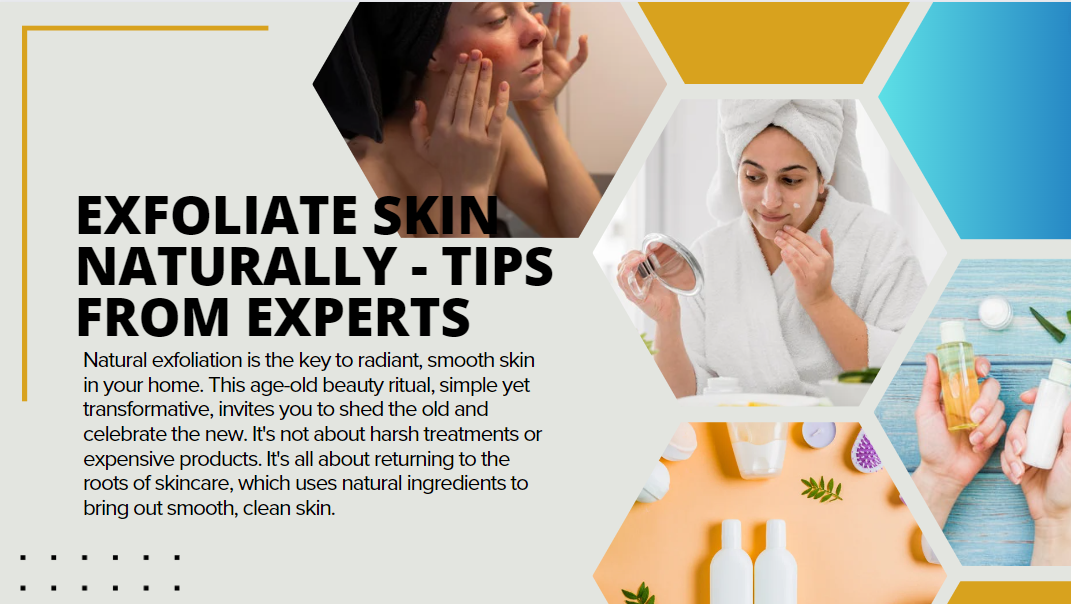How to Skin Tightening at Home
In our pursuit of a youthful appearance, skin tightening has become an increasingly popular topic. Skin tightening is a common concern for many individuals seeking to maintain a youthful appearance. Various factors contribute to sagging skin, such as aging and environmental stressors.
While there are numerous professional treatments available, many individuals prefer the convenience and affordability of achieving tighter skin within the comfort of their own homes. This complete guide on home skin tightening can help you improve your skin’s elasticity and prevent sagging.
Basics of Skin Tightening
Skin tightening is a process that aims to improve firmness and elasticity and reduce the sagging of the skin by enhancing its structural support. This is primarily achieved through stimulating collagen production, vital in maintaining the skin’s tightness and suppleness. Skin tightening focuses on improving and strengthening connective tissues beneath the skin’s surface. By understanding how this process works, we can implement targeted strategies to achieve noticeable improvements in our skin’s appearance.
What Causes Sagging Skin?
To effectively address sagging skin, it is crucial to understand its underlying causes. Various factors contribute to sagging skin.
1. Biological and Environmental Factors

a) Aging: As we age, our skin loses elasticity due to decreased collagen and elastin production. Both of these proteins are responsible for maintaining the structure and firmness of our skin. Additionally, the fat layer beneath the skin diminishes, leading to a loss of volume and sagging.
b) Genetics: Genetic predisposition can play a significant role in determining how quickly or noticeably our skin sags. Some individuals may have inherited genes that affect collagen synthesis or weaken the connective tissues, making them more prone to sagging.
c) Hormonal Changes: Hormonal fluctuations during critical life stages such as menopause or pregnancy can impact collagen production and contribute to saggy skin. Estrogen, in particular, helps maintain skin elasticity, so a decline in its levels can result in reduced firmness.
d) Sun Exposure: Excessive exposure to harmful UV rays is one of the leading causes of premature aging and sagging skin. UV radiation damages collagen fibers, inhibits collagen synthesis, and breaks down elastin, weakening support structures and laxity.
2. Lifestyle Habits that Promote Saggy Skin
a) Poor Diet: A diet lacking essential nutrients like vitamins C, E, A, and protein can hinder collagen production processes necessary for maintaining tight skin. Consuming excessive sugar or highly processed foods can also lead to inflammation that affects overall skin health.
b) Lack of Hydration: Dehydration compromises skin health and elasticity. When the body doesn’t receive enough water, the skin becomes dry, dull, and more prone to sagging. Drinking an adequate amount of water can help maintain hydrated and plump skin.
c) High Stress Levels: Chronic stress increases cortisol production, a hormone that promotes collagen breakdown and impairs synthesis. Prolonged stress weakens the skin’s supportive structure, contributing to sagging.
d) Inadequate Skincare Routine: Neglecting proper skin care can result in premature aging and sagging skin. Failing to cleanse, moisturize, and protect the skin from harmful environmental factors accelerates collagen breakdown and leads to loss of elasticity.
e) Lack of Exercise: Regular exercise helps improve blood circulation, delivering oxygen and nutrients to the skin cells. It also stimulates collagen production, helping maintain the firmness and tone of the skin.
f) Smoking and Alcohol Consumption: Smokers tend to have more pronounced signs of aging due to smoking’s impact on blood flow and oxygen delivery to the skin. Alcohol consumption can also dehydrate the body, leading to dryness and loss of skin elasticity.
Home Remedies for Skin Tightening
1. Facial Exercises
Facial exercises can help tone and tighten the muscles in your face, resulting in firmer skin. Here are some simple activities you can try:
- Jawline Exercise: Tilt your head back and look at the ceiling. Push your lower jaw forward and hold for a few seconds. Repeat 10 times.
- Cheek Lifts: Smile as wide as possible while keeping your lips closed. Place your fingers on the corners of your mouth and lift gently to create resistance for your cheek muscles. Hold for a few seconds and repeat 8-9 times.
2. Egg White Mask
Egg whites have natural astringent properties that can help tighten the skin.
- Whisk one egg white until it becomes frothy.
- Apply it evenly on your face using clean fingers or a brush.
- Allow it to dry completely, then rinse off with lukewarm water.
- Use this mask once or twice a week for best results.
3. Aloe Vera Gel
Aloe vera is known for its nourishing and tightening properties, making it an excellent home remedy for sagging skin.
- Extract fresh gel from an aloe vera leaf and apply it to the affected areas.
- Gently massage in circular motions for 5 minutes, allowing the gel to penetrate the skin.
- Leave it on for about 15 minutes before rinsing off with water.
4. Cucumber Juice:
Cucumber contains silica, which helps improve collagen production and promote skin elasticity.
- Grate a cucumber and extract its juice using a sieve or cheesecloth.
- Apply the cucumber juice to your face using a cotton ball or pad.
- Let it sit for about 20 minutes before rinsing off with cool water.
5. Honey and Lemon Mask:
Honey has moisturizing properties, while lemon helps tighten pores and brighten the skin tone.
- Mix 1 tablespoon of honey with 1 teaspoon of freshly squeezed lemon juice.
- Apply the mixture to your face and neck, avoiding the eye area.
- Leave it on for about 15 minutes, then rinse off with warm water.
6. Green Tea:
Green tea is rich in antioxidants that can help protect the skin from damage and improve its elasticity.
- Brew a cup of green tea and let it cool down.
- Dip a clean cloth into the tea and apply it to your face as a compress for 10-15 minutes.
- Rinse your face with cool water afterward.
7. Olive Oil Massage:
Olive oil contains vitamins and essential fatty acids that nourish the skin and promote firmness.
- Warm up some extra virgin olive oil in a microwave or by rubbing it between your hands.
- Gently massage the warm oil onto your face using upward circular motions for 5-10 minutes.
- Leave it on for another 10 minutes, then rinse off with lukewarm water.
Beneficial Foods for Skin Tightening
1. Collagen-Boosting Foods
Collagen is a protein that gives the skin its strength and elasticity. As we age, collagen production naturally decreases, leading to sagging skin. However, certain foods can help promote collagen synthesis in the body, helping to tighten and firm the skin.
Bone Broth: Rich in amino acids such as proline and glycine, bone broth helps support collagen production. Consuming bone broth regularly can improve skin elasticity and reduce the appearance of wrinkles.
Citrus Fruits: Citrus fruits like oranges, lemons, and grapefruits are high in vitamin C. This essential nutrient is necessary for collagen synthesis and helps protect existing collagen fibers from damage caused by free radicals.
Bell Peppers: Bell peppers are an excellent source of vitamin C and antioxidants such as beta-carotene. These compounds aid in collagen formation, promoting tighter, firmer skin.
Dark Leafy Greens: Greens like spinach, kale, and Swiss chard are packed with vitamins A and C, which assist in collagen production. They also contain antioxidants that combat oxidative stress on the skin.
Berries: Berries like strawberries, blueberries, and raspberries are rich in antioxidants that help neutralize free radicals that contribute to premature aging of the skin.
Fatty Fish: Fatty fish, such as salmon, mackerel, and trout, are excellent sources of omega-3 fatty acids. These healthy fats help nourish the skin and improve its elasticity. Additionally, they contain antioxidants that protect the skin from free radical damage.
2. Hydrating Foods
Proper hydration is essential for maintaining healthy and firm skin. Dehydration can make the skin look dull and accentuate sagging or fine lines. Incorporating hydrating foods into your diet can improve overall skin health.
Water-rich Fruits and Vegetables: Foods with high water content, such as watermelon, cucumbers, celery, tomatoes, and citrus fruits, are not only refreshing but also provide hydration to the body while nourishing the skin from within.
Cucumber: Cucumbers have a high water content and contain silica, a mineral that helps enhance collagen production. They also have a cooling effect on the skin and reduce puffiness.
Coconut Water: Besides being a great source of hydration, coconut water is rich in electrolytes and minerals that promote healthy skin. It can help replenish lost moisture and improve skin elasticity.
Aloe Vera: Aloe vera gel contains hydrating properties that soothe and moisturize the skin. Drinking aloe vera juice or adding it to smoothies can provide internal hydration.
Chia Seeds: Chia seeds are rich in omega-3 fatty acids, which help retain moisture within the skin cells. When soaked in water, chia seeds form a gel-like consistency that keeps the body hydrated.
Foods to Avoid for Maintaining Tight Skin
It is equally important to be aware of certain foods that can have an adverse impact on your skin’s elasticity and firmness. Here are some foods to avoid:
1. Processed and Sugary Foods: Processed foods, such as processed meats, packaged snacks, and sugary treats like candy and soda, can cause inflammation in the body. This inflammation can damage collagen and elastin fibers, leading to sagging and wrinkled skin. Opt for whole, natural foods instead.
2. High Glycemic Index Foods: Foods with a high glycemic index (GI), such as white bread, white rice, and sugary cereals, can rapidly increase blood sugar levels. These spikes in blood sugar trigger glycation, which damages collagen and elastin fibers in the skin. To maintain firm skin, choose low-GI alternatives like whole grains and legumes.
3. Trans-Fats: Trans fats are commonly found in fried foods, processed snacks, margarine, and commercially baked goods. These unhealthy fats promote inflammation in the body and accelerate the aging process of the skin by breaking down collagen fibers. Opt for healthier alternatives like avocados or nuts that provide essential fatty acids for maintaining healthy skin.
4. Excessive Salt Intake: While sodium is necessary for our health, excessive salt can lead to fluid retention and bloating. This can make the skin appear puffy and less firm. It is important to moderate your salt intake by avoiding highly processed foods often packed with added salt.
Conclusion
In conclusion, achieving skin tightening at home is possible with a combination of consistent skin care practices and healthy lifestyle habits. Through facial workouts, massage, DIY face masks, a nutritious diet, and a thorough skincare regimen, you may get tighter, younger-looking skin.
By taking these steps, you can naturally stimulate collagen production, improve blood circulation, enhance elasticity, and protect your skin from environmental damage. Embrace self-care as a vital part of your routine and enjoy the benefits of firmer and tighter skin that radiates health and vitality.



